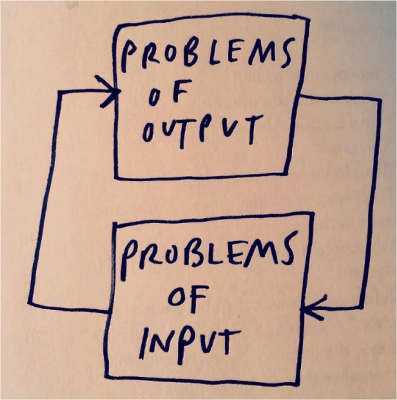Your Constant Output Problem Is Usually Really An Input Problem





by Tony Vidler ![]()
![]()
![]()
 We like constant output…constant revenue coming in the door is the output we seek right? Too often financial advice businesses struggle to achieve constant output though…it gets a bit “peak and trough”.
We like constant output…constant revenue coming in the door is the output we seek right? Too often financial advice businesses struggle to achieve constant output though…it gets a bit “peak and trough”.
Well…when we have a repeated problem – like inconsistent results – we need a process.
Why?
Processes produce predictable performance. That is the entire point of having processes isn’t it? To produce consistent and predictable outcomes isn’t it?
A process is created in order to ensure that (as far as is possible in our crazy old world) a known outcome will be achieved when a predictable and repeated event or action occurs.
To put it another way: processes are known patterns of success. They are the reason why people pay more for (say) a McDonalds franchise than they would for an independently owned burger bar in the same neighbourhood. It is the brand value and predictability of results which generates the premium pricing, and that has been built upon the predictability of the business’ performance created by processes which created the additional value.
It is the same reason why partners buying into law or accountancy firms pay more to buy into a larger, better established practices with predictable performance. Those types of practices have more processes (especially around marketing of the firm, client engagement strategies and ability to process core work efficiently) which in turn make them more profitable per capita, and produce more sustainable revenue streams.
Despite the logic of creating greater capital value inside a business with the adoption of robust business processes, advisers frequently still retain that wonderfully Gallic laissez-faire attitude: “Let everyone do as they choose.” That is I suppose the ultimate form of free enterprise, where every professional determines their own methodology and way of interacting with the market. Where this becomes most apparent, and creates the greatest stress for financial professionals, is in the area of creating engagement with the market and generating sufficient business opportunities.
The lack of process, because of the laissez-faire approach to prospecting or marketing, leads to the classic fluctuation of effort and reward over time:

Because there is no process the advisers efforts in prospecting fluctuate. The ebb and flow of prospecting efforts is not usually driven by the fact that the adviser has been ridiculously well paid for the last client they brought onboard as the media would suggest though. Advisers don’t tend to land a new client and then head off for a mini-holiday to celebrate with their new found earnings.
The real problem is that because of a lack of process within the practice on handling the processing of business, the on-boarding of clients, and engaging with the wider market to continually create new client conversations or opportunities, the individual professional assumes responsibility for all of those functions.
So the trap is the adviser fluctuates between “get the job” and “do the job”. A lot of effort goes into getting a client. Then no more effort goes into getting clients because we are busily trying to do the work for the clients we just got. When that work is done, there are no more clients needing high value work, so suddenly all efforts are directed into finding new work opportunities.
This “get the job/do the job” cycle is deadly, literally, and it has undoubtedly been responsible for more heart attacks amongst advisers than any regulator or market meltdown ever has.
The solution when one has a repeated problem is to create a process that manages or eliminates the problem. So it is with marketing and lead generation and opportunity creation for financial advice firms today: prospecting is no longer a one-time event in successful firms. It is not an isolated act taken by an individual, it is a function of the firm which is driven by processes and activity inputs which are known to produce predictable results.
The bottom line is that in todays professional practice the issue of fluctuating output in areas such as revenue or new client acquisition arises because there is fluctuating input. To manage the inputs – the activities and communications strategies that lead to a constant stream of client engagement and enquiries – one has to build replicable processes. Apart from the advantage to your practice of creating more predictable work and revenue flows, there is a strong probability that it will create additional captial value for the business too. And maybe fewer heart attacks too.
Comments (2)